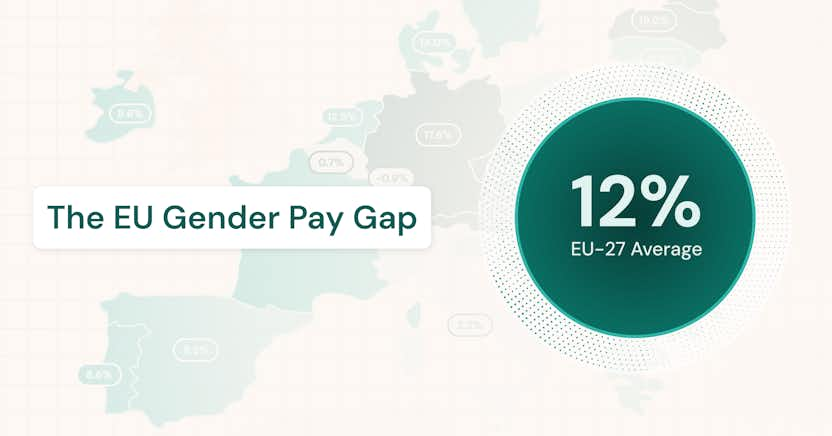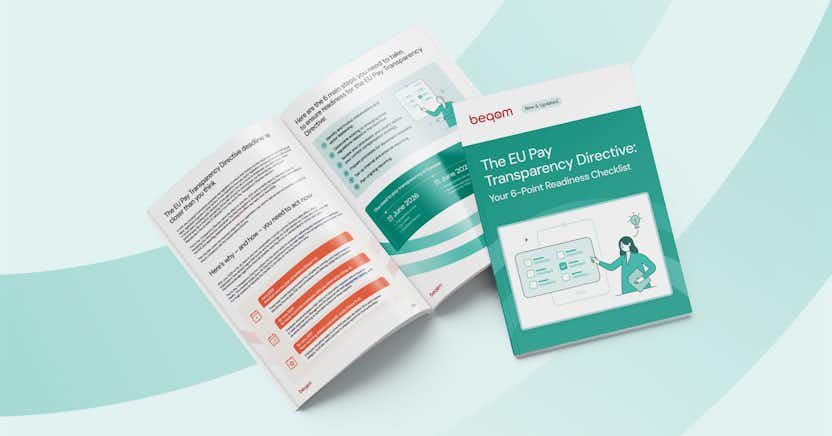
Learn more about the following beqom products
Long-term incentives (LTIs) are integral to modern compensation strategies, serving as tools to attract, retain, and motivate key talent while aligning employee interests with long-term organizational goals. These incentives are designed not only to reward individual contributions but also to foster loyalty and encourage employees to think like owners. In this guide, we’ll take an in-depth look at LTIs, their strategic significance, types, design principles, and best practices for effective administration, ensuring compliance and transparency along the way.
The essence of long-term incentives (LTIs)
Long-term incentives are a form of variable compensation earned in the present but paid out over time, often with conditions tied to continued employment or performance. Their primary aim is to encourage employees to remain with the company, contribute to its growth, and align their efforts with the organization’s long-term success.
Typically offered in the form of stock options, restricted stock units (RSUs), or deferred cash payments, LTIs reward employees for meeting strategic goals over extended periods. These programs are especially prevalent in senior management and executive compensation packages but are increasingly used for high-performing employees at all levels to support a pay-for-performance culture.
By tying rewards to long-term company performance, LTIs shift the focus from short-term gains to sustained growth, ensuring that key employees are invested in the organization’s success.
Understanding long-term incentive plans (LTIPs)
A long-term incentive plan (LTIP) is the framework that outlines how LTIs are granted, vested, and paid out. LTIPs define the eligibility criteria, performance metrics, and vesting schedules that govern the issuance of LTIs. These plans must balance organizational objectives with employee expectations, ensuring fairness and transparency.
For example, an LTIP might specify that employees must meet certain performance metrics—such as achieving revenue targets or market share growth—before earning their incentives. Similarly, the plan may include a vesting schedule where rewards are distributed over several years, reinforcing employee retention.
A well-designed LTIP is flexible enough to evolve with business needs and robust enough to remain effective during market fluctuations.
The strategic importance of LTIs in attracting and retaining talent
In competitive industries, top talent is a scarce resource. Organizations leverage LTIs to stand out in the hiring market, particularly for executive and managerial positions. These incentives create a compelling value proposition by linking employee rewards to the organization’s success over time.
Moreover, LTIs foster a sense of ownership among employees. Equity-based incentives like stock options or RSUs make employees stakeholders in the company, encouraging them to think and act in the organization’s best interests. This alignment between employee and organizational goals strengthens loyalty and reduces turnover, particularly for high-performing or critical employees.
Who is eligible to get LTIPs?
Eligibility for LTIPs often depends on an employee’s role, contribution, and potential impact on the organization’s success. While senior executives are the most common recipients of LTIs, many companies extend these incentives to key managers, technical experts, and high-performing employees to recognize their value and encourage long-term commitment.
Eligibility criteria are usually based on a combination of factors, including:
- Job role: Leadership and strategic roles often qualify.
- Performance metrics: High-achieving employees who meet or exceed performance targets.
- Tenure: Employees with a demonstrated commitment to the organization.
By targeting the right employees, LTIPs can maximize their effectiveness in driving organizational goals.
Key types of long-term incentive plans
Organizations can structure LTIPs in various ways to suit their objectives. Common types of LTIs include:
1. Employee stock ownership plans (ESOPs)
Employee Stock Ownership Plans (ESOPs) allocate company shares to employees, typically as part of their compensation package. The allocation may depend on factors such as seniority, performance, or tenure. Employees benefit from both the ownership stake and the potential for long-term capital appreciation.
2. Employee stock purchase plans (ESPPs)
Employee Stock Purchase Plans (ESPPs) allow employees to purchase company stock at a discounted price. This provides an immediate financial benefit and creates a vested interest in the company’s performance. ESPPs are especially effective in building a sense of ownership across a wider employee base.
3. Restricted stock units (RSUs)
Restricted stock units (RSUs) grant shares of company stock that vest over time or upon meeting performance criteria. These are common for executive compensation packages and are effective for retaining top talent. While this form of equity compensation can be advantageous, it’s not suitable for all organizations. Before implementing RSUs, companies should thoroughly understand their advantages, drawbacks, and tax implications so the process can be properly executed and aligned with organizational goals.
4. Incentive stock option plans (ISOPs)
Incentive stock option plans (ISOPs) give employees the right to buy company shares at a predetermined price. These options often have a vesting schedule and are designed to encourage employees to stay with the company while contributing to its growth.
5. Deferred profit-sharing plans (DPSPs)
In a DPSP, eligible employees receive a portion of company profits as a deferred cash payment or stock grant. These plans align employee rewards with the organization’s financial success.
Implementing effective LTI programs
Design principles for LTI programs
Creating an effective LTI program requires careful planning and alignment with organizational goals. Key design principles include:
- Clarity and simplicity: Employees should clearly understand how they can earn incentives.
- Alignment with business objectives: The program should directly support strategic priorities, such as revenue growth or market expansion.
- Fairness and equity: Ensure the program is perceived as fair, with transparent eligibility and award criteria, such as can be managed by pay equity software.
- Scalability and adaptability: As business needs evolve, the LTI program should be flexible enough to adapt.
Managing and administering LTIs effectively
Administering LTIs can be challenging due to the complexity of vesting schedules, compliance requirements, and the need for accurate data management.
Challenges in LTI administration
- Tracking multiple plans: Organizations often have several LTIPs running simultaneously, each with unique vesting schedules and performance criteria.
- Data integration: LTIs rely on accurate data from various sources, such as performance metrics and financial forecasts.
- Compliance risks: Failure to adhere to regulatory requirements can result in penalties and reputational damage.
Automated compensation management software, like beqom Pay Management, simplifies these challenges by integrating LTI administration into a single platform.
Strategic objectives achieved through LTIs
By rewarding employees for meeting long-term goals, LTIs help organizations achieve key objectives, including:
- Strengthening employee engagement and motivation.
- Driving sustained business growth.
- Encouraging innovation and strategic thinking.
These outcomes not only benefit the organization but also create a more dynamic and competitive workplace culture.
Legal and regulatory considerations in LTI implementation
LTIs must comply with a wide range of legal and regulatory requirements, including:
- Tax implications: Both employees and employers need to manage tax liabilities related to equity awards and deferred compensation.
- Governance standards: Companies must maintain accurate records of LTI grants and approvals to meet governance requirements.
- Reporting obligations: Public companies must disclose certain details of their LTIPs in regulatory filings.
Proper compliance minimizes risk and ensures the long-term viability of incentive programs.
Compliance and transparency in LTI management
Transparency is essential for building trust in LTI programs. Employees should understand how awards are calculated, why they are eligible, and how their performance affects the outcomes.
Organizations should track and report every step of the process, from grant approvals to vesting schedules, using automated tools to ensure accuracy. Transparent practices also help address employee concerns and enhance overall program effectiveness.
The future of long-term incentives
As organizations increasingly focus on innovation and sustainability, the future of LTIs will likely include:
- Personalized incentives: Tailored LTI plans to meet individual employee needs and preferences.
- Data-driven decision-making: Advanced analytics to optimize program design and performance.
- Integration with total rewards: Aligning LTIs with other compensation and benefits to provide a holistic employee experience.
By staying ahead of these trends, organizations can ensure their LTI programs remain competitive and effective.
Taking action: Elevating LTI strategy for organizational success
Long-term incentives are more than just rewards; they are strategic tools for driving organizational success. With the right design, administration, and technology, companies can leverage LTIs to attract top talent, retain key employees, and align compensation with long-term goals.
beqom’s total compensation management platform offers comprehensive solutions to simplify LTI administration, enhance compliance, and integrate LTIs into your overall compensation strategy. Ready to elevate your approach? Contact beqom today to learn how easy it can be to administer your long term incentive strategy.
FAQs
Where can I get more information on Long Term Incentive Plans?
See beqom's guide, Understanding Long Term Incentives.
What is an example of a long-term incentive?
An example of an LTI is an RSU, which grants employees shares of company stock that vest over time or upon meeting specific performance targets.
What does LTI mean in compensation?
LTI stands for long-term incentive, a form of compensation designed to reward employees for contributing to long-term organizational success.
What are the benefits of long-term incentives?
LTIs drive retention, align employee interests with company goals, foster loyalty, and create a sense of ownership.
What is a long-term incentive contract?
An LTI contract outlines the terms under which employees receive deferred rewards, such as vesting schedules and performance metrics.







